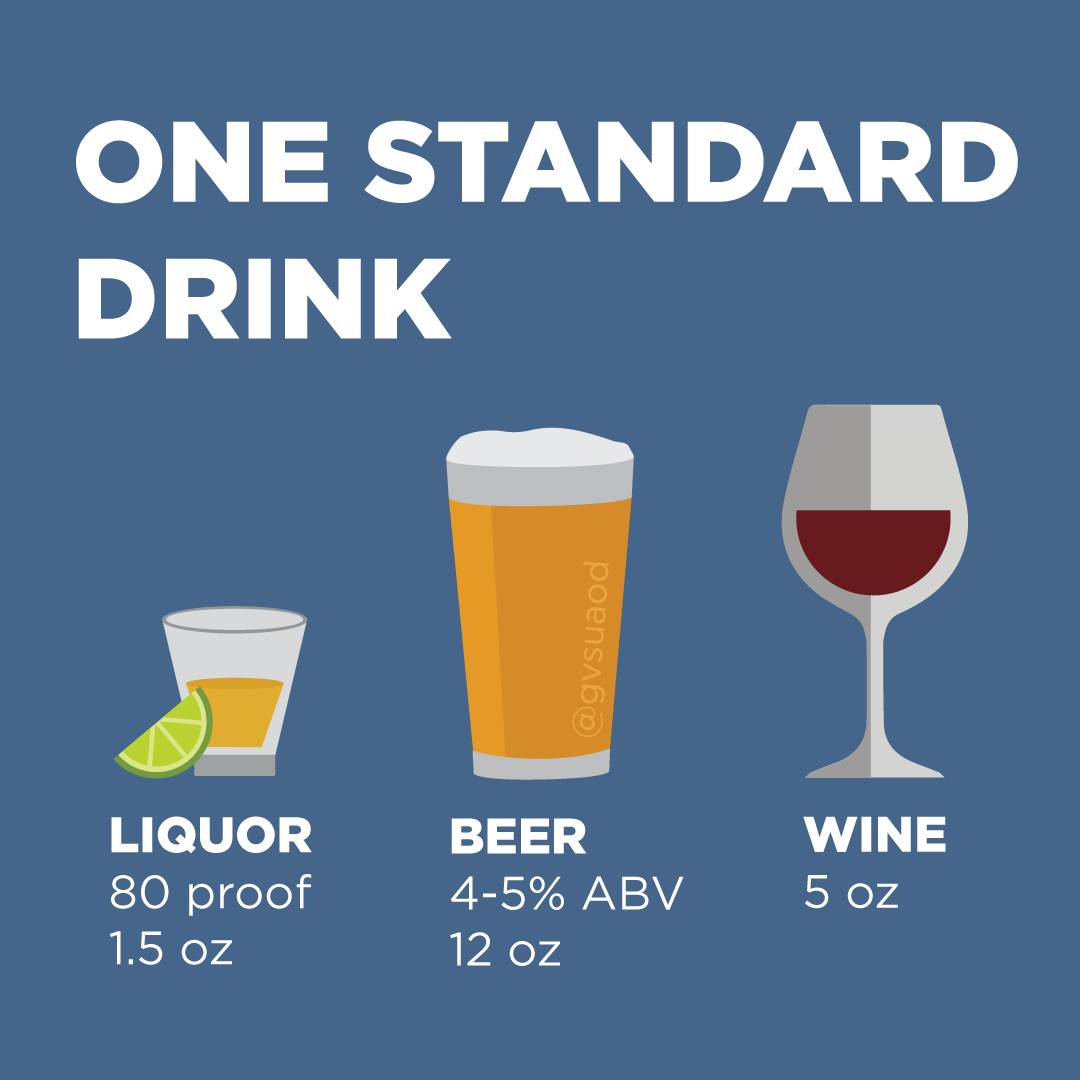SubMenu
Alcohol
Ethyl alcohol (ethanol) is the intoxicating ingredient found in beer, wine, and liquors. It depresses (slows down) the central nervous system, slowing thought, speech, and reactions.
Under normal circumstances alcohol is broken down by the liver. Dehydration, health conditions, medications, other drugs can slow this process down allowing alcohol to build up in the system. Normal alcohol metabolism is approximately one standard drink per hour broken down. High-alcohol beers (>5% alcohol by volume), heavy pours, and high proof (greater than 80 proof/40% alcohol by volume) all increase the amount of alcohol a single drink contains. When too much alcohol builds up in the body, alcohol poisoning can result. Alcohol poisoning can involve vomiting, blacking out, and death.
How Much is One Drink?

Moderate, Binge & Heavy Drinking
According to the Center for Disease Control and Prevention, excessive drinking includes binge drinking, heavy drinking, and any drinking by pregnant people or people younger than the age of 21.
Moderate Drinking
For those over 21 who choose to drink, moderating drinking is the best way to lower the risks associated with consuming alcohol. Moderate drinking for women is no more than 1 drink per day, while moderate drinking for men is no more than 2 drinks on any given day.
Binge Drinking
The National Institute on Alcohol Abuse and Alcoholism defines binge drinking as a pattern of high-risk drinking that brings a person’s blood alcohol concentration (BAC) to 0.08 or above.
This typically happens when men consume 5 or more drinks or women consume 4 or more drinks in about 2 hours.
Heavy Drinking
For women, heavy drinking is defined as consuming 8 or more drinks per week, while for men heavy drinking is defined as consuming 15 or more drinks per week.
Risks of Alcohol Use
Short term risks of alcohol use in any amount include slowing reactions, slowed thinking, and impaired reasoning. The ability to drive or operate heavy or complicated machinery is impaired, increasing risks. The risks for injury and legal consequences associated with alcohol use exists with even small amounts consumed.
Academic and athletic performance are also negatively affected by alcohol use. Studies tell us that students who consume alcohol in excess have worse grades, increased risk of dropping out, and more trouble reaching their potential. This effect increases the more alcohol a student consumes, and the more time they spend drinking excessively.
Content Editor:
Jordan Frazer
530-895-2441

